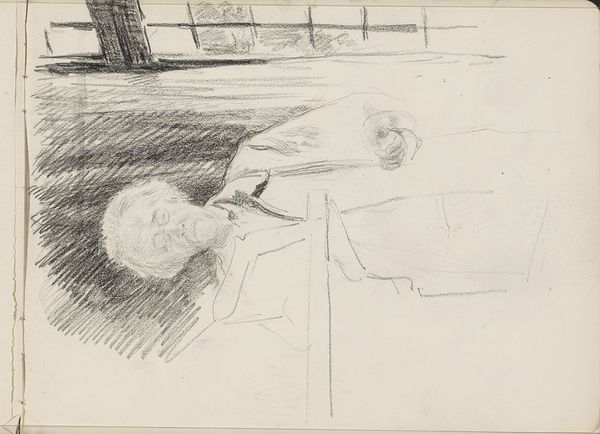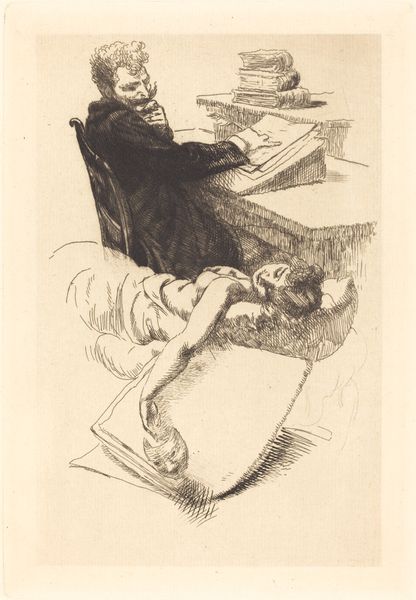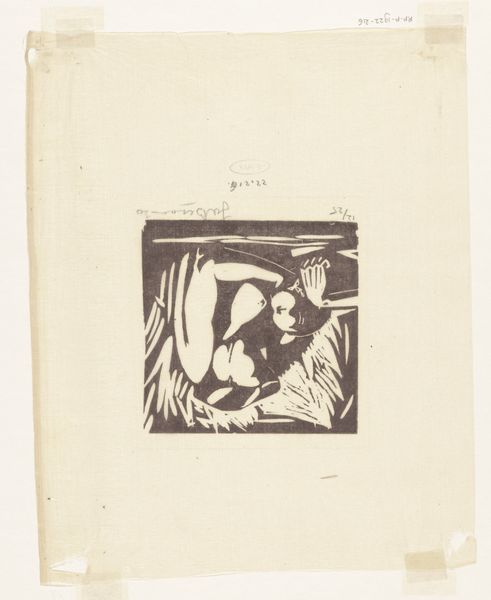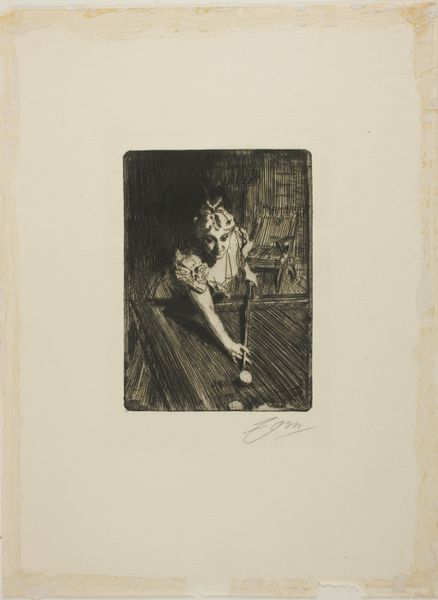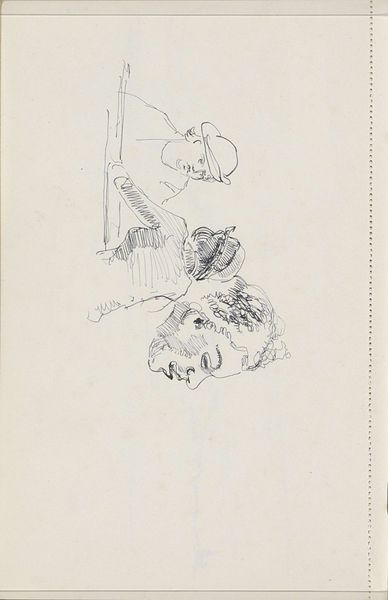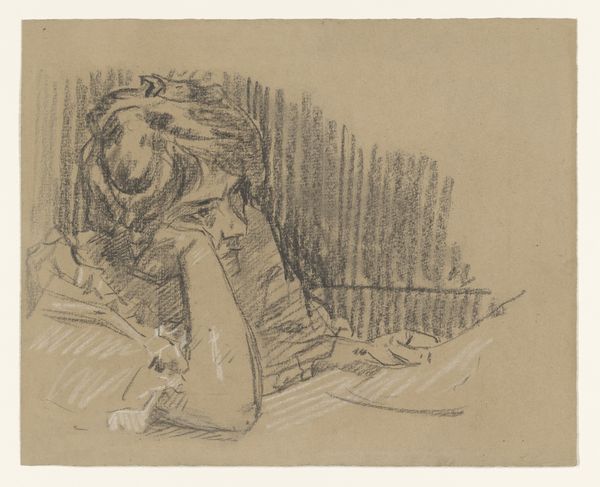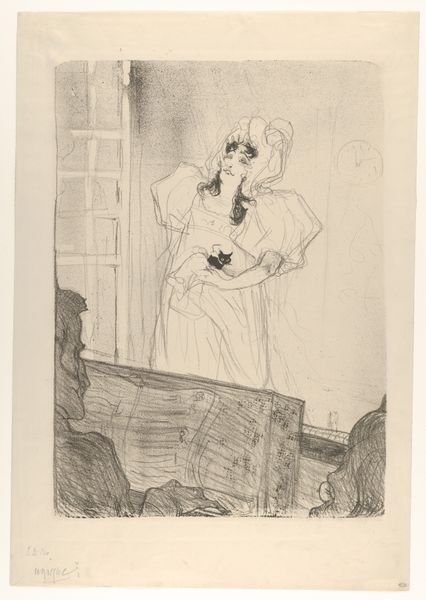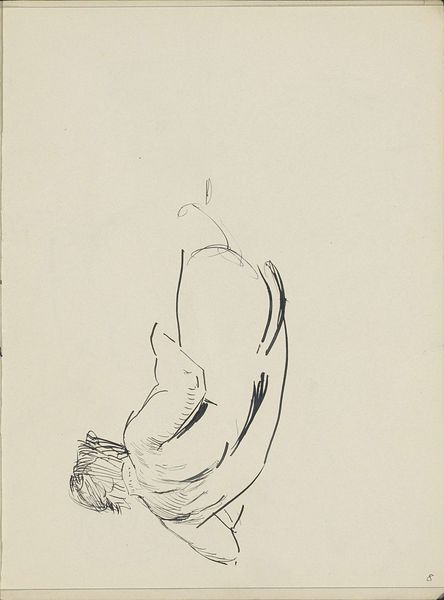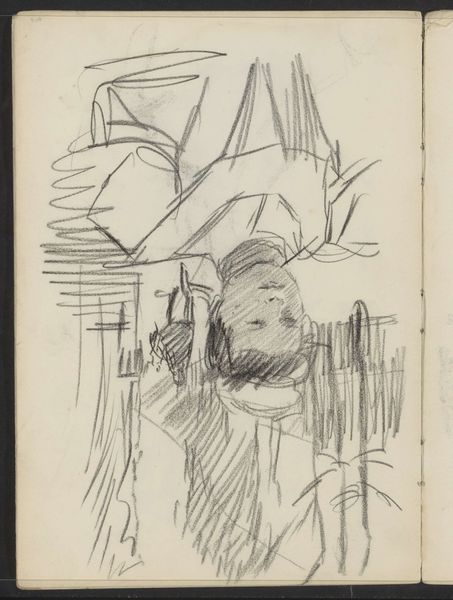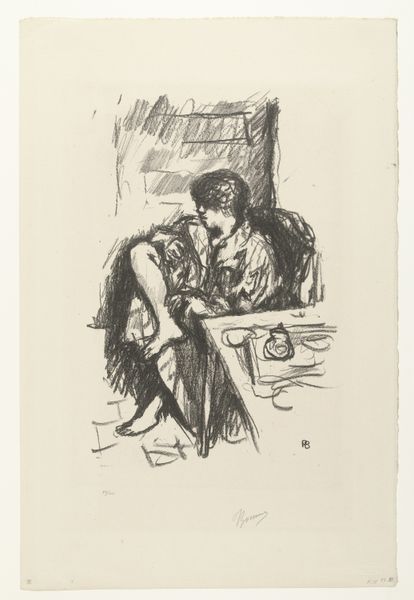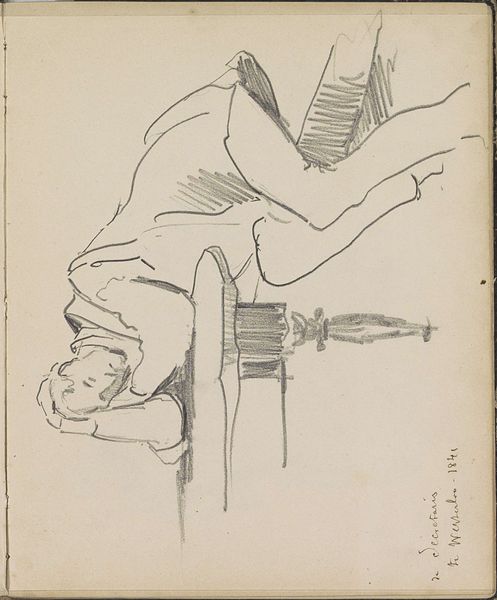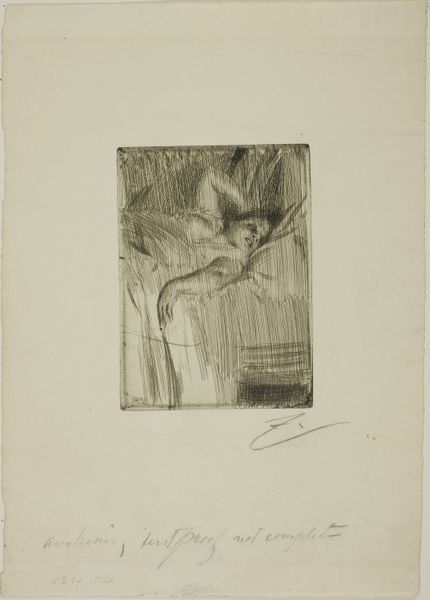
drawing, ink
#
drawing
#
figuration
#
ink
Copyright: Rijks Museum: Open Domain
Editor: This is Otto Verhagen's 1918 ink drawing, "Pianospelende man," or "Man Playing Piano." I notice it is mostly monochromatic and conveys a melancholic atmosphere, and I can't help but focus on the dark lines above the pianist. How does the historical context shape your view of this work? Curator: Well, it's dated 1918, right at the tail end of the First World War. Think about the social and cultural anxieties prevalent then. The somber mood you picked up on might be a reflection of collective grief and uncertainty, mirrored by that isolated figure at the piano. How does the man's pose influence your reading? Editor: His head is down, eyes on the keys. It seems like he's trying to shut out everything else. Perhaps the piano offers him some solace. The strong contrast makes it seem like the light is shining just on him. Curator: Exactly. The sharp contrasts, the almost caricature-like rendering of the figure, also speak to a rise of Expressionism. This reflects artists grappling with modern life. And consider who had access to pianos and artistic training then, as those also shape our understanding. The artwork's inherent class structure could shape how it's interpreted and its audience engagement with themes such as refuge or isolation. Editor: I see. So, beyond just the image, it's important to consider the art world and broader society that shaped its creation and reception. Thinking about that reframes my interpretation. Curator: Precisely. Art exists in a dialogue with the world. Editor: Thanks, I didn't see the historical context at first but the cultural implications changed my initial perspective on the piece.
Comments
No comments
Be the first to comment and join the conversation on the ultimate creative platform.
